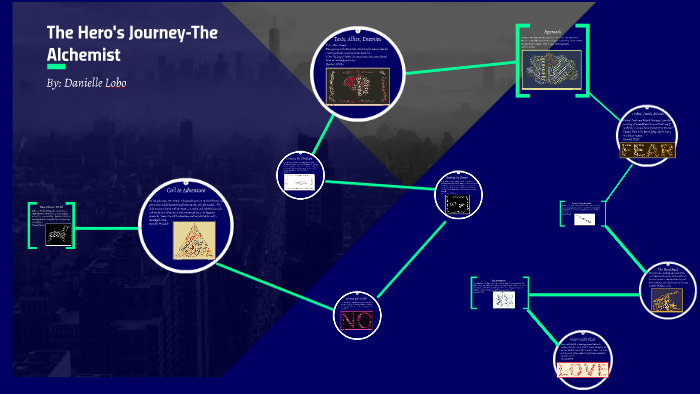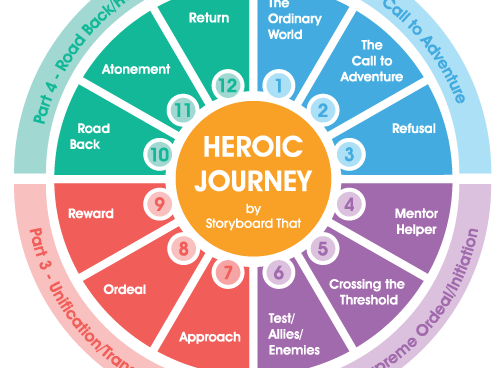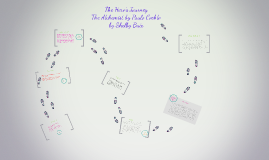The hero leaves the familiar behind and enters the unknown.From The Alchemist: Santiago sells his flock of sheep and takes a boat to Tangier inAfrica, leaving his shepherd life behind. Atonement The hero succeeds his or her master/father figure.From The Alchemist: Santiago meets the alchemist.
The Alchemist as a Monomyth 1931 Words 8 Pages. Sympathetic resonance within readers by their usage of archetypal patterns. One of those patterns is known as the hero's journey, which Joseph Campbell gave an understandable idea of in his book The Hero. Learn the alchemist hero's journey with free interactive flashcards. Choose from 500 different sets of the alchemist hero's journey flashcards on Quizlet.
Some people consider him a hero and some people don’t. Whether he seems heroic or not, he has a story full of mentors and helpers which were vital to his journey. His main mentors and helpers were Zeus, Athena, and his family. Zeus kept the other gods from punishing Odysseus, especially Poseidon. He decided most of Zeus his actions were justified and should not be punished. Another god that assisted Odysseus on his quest home was Athena, who helped Odysseus in many ways as well. She was with him through his whole story and never left him. Athena aids Odysseus in his fight against the suitors by making sure each arrow hits its target. She also aids him afterwards when the other gods are contemplating whether Odysseus is guilty or not. They decide he isn’t by saying, “There will be killing till the score is paid.” Odysseus’ last mentor and helper is his family. His memories of Penelope and Telemachus kept him going and gave him the encouragement he needed to come home. Penelope, although surrounded by suitors, stayed faithful to her husband. She says, “Eurymachus, all my excellence, my beauty and figure, were ruined by the immortals … If he (Odysseus) were to come back to me and take care of my life, then my reputation would be more great and splendid.” The same cannot be said for Odysseus, though, as he cheated on Penelope with Circe and Calypso. Although he might’ve cheated on Penelope, he went through many trials and tribulations for her and…show more content…
Odysseus need Athena, Santiago needed the king, and Edmond needed Abbe to for fill their journeys. While all of these characters went on exciting adventures, Edmond Dantes was the most heroic out of all three. While he got the revenge he was seeking, he also gave back to his world in the end. He was faithful to Mercedes and he was kind to Jake up oh. He was her Roeck not only by his actions but also buy his mind and
This article is an excerpt from the Shortform summary of 'The Hero with a Thousand Faces' by Joseph Campbell. Shortform has the world's best summaries of books you should be reading.
Like this article? Sign up for a free trial here.
What is stage 16 of Joseph Campbell’s hero’s journey? What is the significance of being a “master of two worlds”?
Master of two worlds is the stage of the hero’s journey in which the hero can move seamlessly between the two worlds, without destroying or compromising either. Master of two worlds is stage 16 of Joseph Campbell’s hero’s journey, from The Hero with a Thousand Faces.

We’ll cover what being a master of two worlds entails and look at examples of the master-of-two-worlds stage of the hero’s journey.
Dual Kingship: Master of Two Worlds
The true hero is one who can move seamlessly between the two worlds, without destroying or compromising either. Here, he becomes master of two worlds. We see this in the Transfiguration of Christ from the New Testament, in which the body of Jesus becomes radiant with the glory and grace of God.
Jesus brings Peter, James, and John to a mountain. He becomes radiant before them and converses with the Old Testament figures of Moses and Elias. God then declares from on high that Jesus is His beloved Son, striking fear into the three men whom Jesus had brought. But Jesus touches them and tells them not to be afraid. Suddenly, Jesus has transformed back again into a man. He has crossed and re-crossed the divine threshold, he is the master of both worlds. Jesus tells the men not to share the vision they have seen with anyone, “until the Son of man be risen again from the dead.”
Notably, this vision has only appeared to those who have forsaken worldly pursuits and secular desires. The individual must embrace their own self-annihilation. This is a requirement to be a master of two worlds. These figures of ascetic self-denial are represented across the world’s religious traditions, from the wandering mendicants of the East, to the Wandering Jew and itinerant monks of medieval Europe. The manifestations vary, but the concept is universal.
Culture Heroes

Eventually, there comes a point where the gods and heroes of mythology must yield to actual historical figures. Historical figures also become masters of two worlds. A step removed from origin stories about the creation of the cosmos, we are now dealing with the phenomenon of culture heroes—the founders who appear at the beginning of a culture’s legendary past. Rather than creating the universe, these figures create cultures.
Such figures are shrouded in mystery and their historicity is much-debated by historians, archaeologists, and anthropologists. Often, these are the kings whom legend tells us were themselves gods or demi-gods and used their divine status to create the great cities and kingdoms that we recognize and see today. They were masters of two worlds.
Epic Hero Journey Graphic Organizer

Eventually, the world no longer needs the culture hero either. Society has been established to a sufficient degree so that now, ordinary men and women can take up the burden of sustaining civilization. The first of this kind is an emperor or king in human form who hereafter stands as the model of good political leadership for the kingdom. This is exemplified by the Chinese figure of Huang Ti, who reigned a few centuries after Fu Hsi. He ascended to the throne at the age of 11 and ruled for over a century, during which the Chinese state enjoyed a golden age of peace and prosperity. He introduced mathematics, shipbuilding, woodworking, money, music, and private property.
Return and Exile
The Alchemist Hero's Journey Quotes
These human culture heroes often have a miraculous childhood (despite frequently being born to lowly status) and are endowed with powers from the moment of their birth. Their herohood is predestined, not achieved. They have some special connection to the world of the supernatural, either through dreams or premonitions, and their story is often one of ignominious exile and glorious return. After a childhood where they overcome extraordinary obstacles, they rise out of obscurity and reveal their true character. This is essentially the theme of crucifixion, followed by resurrection. They are masters of two worlds.
Sargon of Akkad (founder of the Mesopotamian Akkadian Empire and an undisputed historical figure from around 2300 BCE) was, as his legend tells us, born to an obscure mother and an unknown father. After being set adrift in the Euphrates River on a basket of bulrushes, he was discovered by a shepherd and bestowed with great favor by the goddess Ishtar. This divine blessing, this endorsement from the gods was what enabled him to found the world’s first empire.
Similar origin stories of great historical figures abound, from Chandragupta, the founder of the fourth century BCE Maurya empire in India; to the early medieval pope, Gregory the Great; to the first Holy Roman Emperor, Charlemagne.
The Alchemist Hero S Journey 12 Steps
———End of Preview———
Like what you just read? Read the rest of the world's best summary of 'The Hero with a Thousand Faces' at Shortform. Learn the book's critical concepts in 20 minutes or less.
Santiago's Journey In The Alchemist
Here's what you'll find in our full The Hero with a Thousand Faces summary:
The Alchemist Santiago Hero Journey
- How the Hero's Journey reappears hundreds of times in different cultures and ages
- How we attach our psychology to heroes, and how they help embolden us in our lives
- Why stories and mythology are so important, even in today's world
